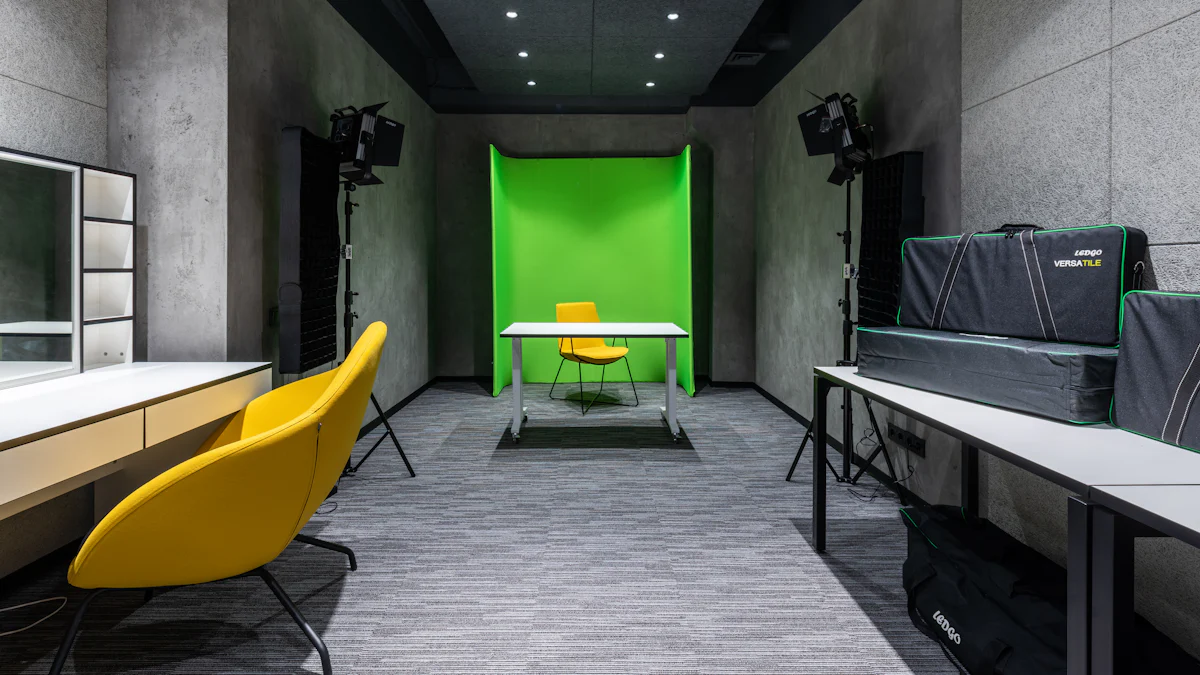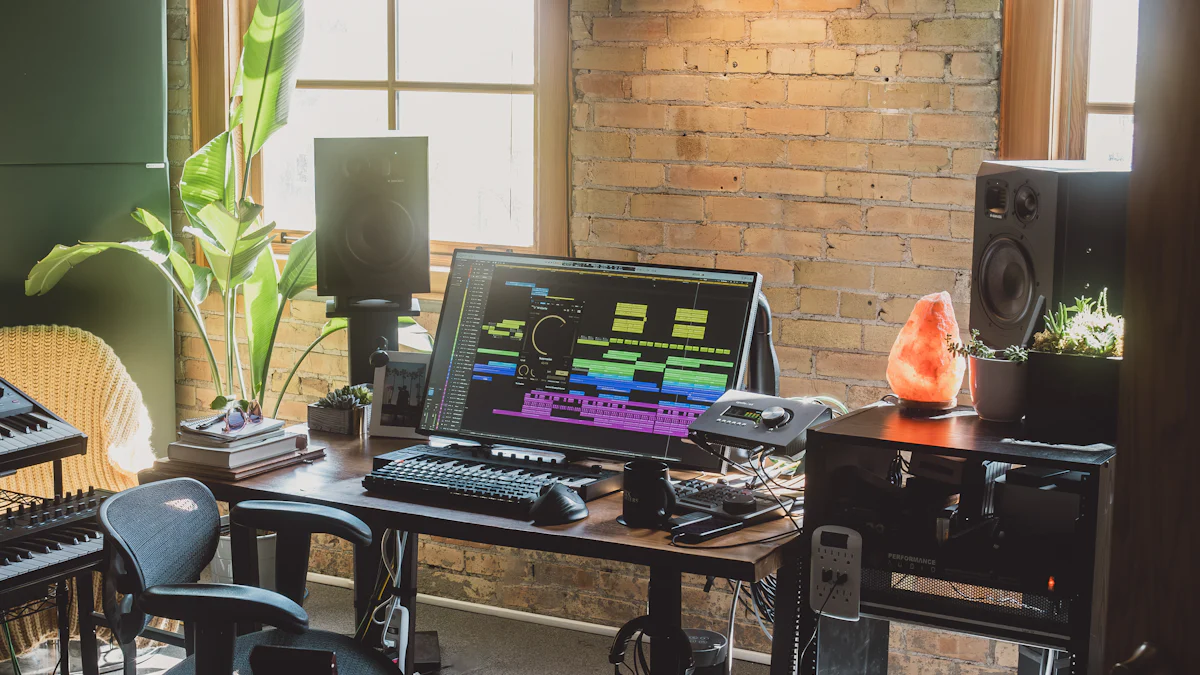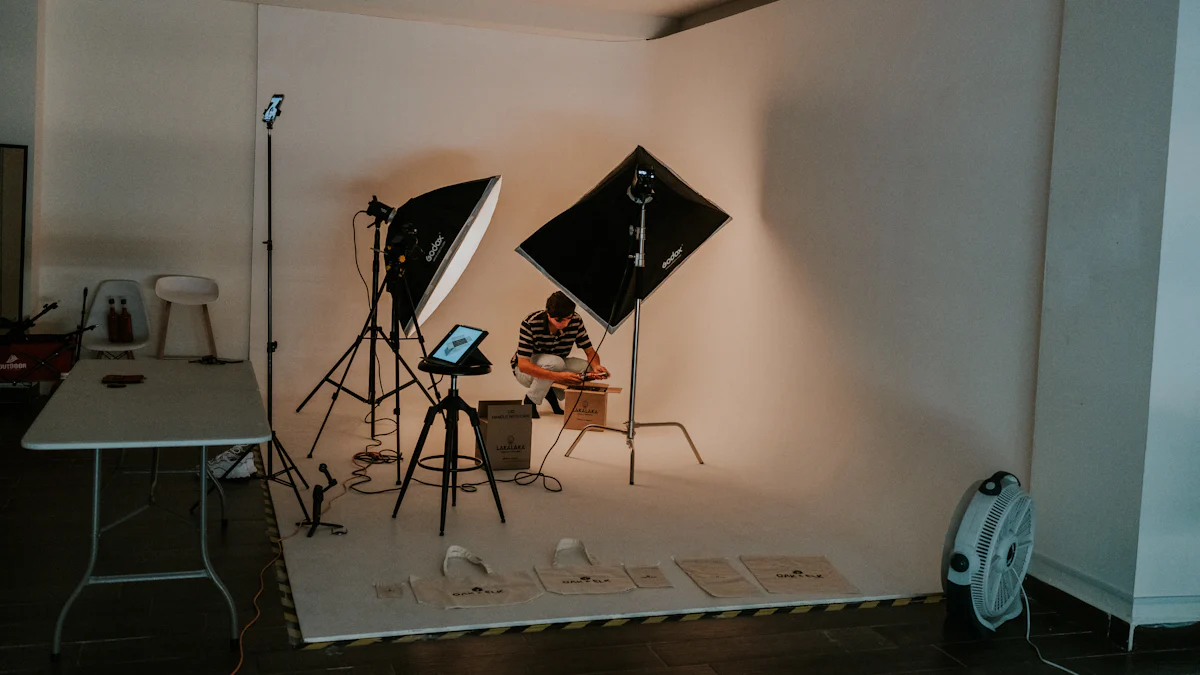What is the Average Work Environment for Interior Designers in 2025
Try Aihirely for
Smarter Interview Prep
Experience real-time AI support tailored to your Resume.
Boost your confidence and ace every question with
AI Mock Interview.

Image Source: pexels
In 2025, your work as an interior designer will likely take you to a variety of places. You might spend part of your day in an office, sketching layouts or collaborating with a team. Other times, you’ll find yourself at a client’s site, inspecting progress or discussing ideas. Remote work is also becoming more common, letting you connect with clients and colleagues from anywhere.
Your schedule will often revolve around project deadlines. Balancing creativity with budgets can limit your time to innovate. Sourcing eco-friendly materials and keeping up with fast-changing trends will add to the challenge. Supply chain delays might also disrupt your plans, making flexibility a must.
The interior design average work environment is evolving. Technology, wellness-focused spaces, and hybrid work models are shaping how you approach your projects. Adapting to these changes will help you thrive in this dynamic field.
Key Takeaways
-
Interior designers in 2025 will work in many places. These include offices, client locations, and from home. Be flexible to handle different work settings.
-
Tools like virtual reality (VR) and augmented reality (AR) will improve design presentations. Use them to make exciting experiences for clients.
-
Being eco-friendly is very important in design. Use green materials and buy locally to please clients and help the planet.
-
It’s important to balance work deadlines and personal time. Set limits and use tools to stay on track and avoid stress.
-
Traveling is still needed for site visits and finding materials. Plan trips well to save time and finish projects successfully.
Interior Design Average Work Environment

Image Source: unsplash
Work Settings
Office-based work for design firms
You’ll likely spend part of your time in an office setting, especially if you work for a design firm. These spaces are where you’ll brainstorm ideas, create layouts, and collaborate with your team. In 2025, many offices are adopting hybrid models, blending in-person and remote work. This shift contrasts with the past when open, collaborative spaces were the norm. Now, you’ll find yourself using technology more than ever to streamline your work and meet client expectations for sustainable and budget-friendly designs.
Remote work and virtual collaboration
Remote work has become a significant part of the interior design average work environment. You’ll rely on digital tools to create designs, share ideas, and communicate with clients. Platforms like virtual reality (VR) and augmented reality (AR) make it easier to present your concepts without being physically present. While remote work offers flexibility, it also comes with challenges like potential isolation. To stay connected, you’ll need to set clear expectations, provide regular updates, and balance remote and in-person interactions.
On-site client meetings and consultations
Meeting clients in person remains essential. You’ll often visit their homes or offices to discuss ideas and inspect spaces. This approach reflects a shift in how designers interact with clients, focusing on convenience and personalization. These meetings allow you to build trust and ensure your designs align with their vision.
Schedules and Flexibility
Full-time and part-time options
Your schedule as an interior designer can vary. Some designers work full-time, while others prefer part-time roles to balance personal commitments. This flexibility makes the profession appealing to many.
Managing project deadlines
Deadlines will drive much of your work. You’ll need to prioritize tasks, plan effectively, and stay organized to meet client expectations. Using tools like time-blocking can help you focus on individual projects without feeling overwhelmed.
Balancing work-life demands
Balancing your career and personal life can be tricky. Setting boundaries, like specific work hours, helps maintain a healthy balance. Incorporating activities like exercise or hobbies into your routine can also reduce stress and keep you energized.
Travel Requirements
Site visits for project oversight
Traveling to project sites is a regular part of your job. You’ll oversee progress, ensure quality, and address any issues that arise. These visits are crucial for maintaining the integrity of your designs.
Material sourcing and showroom visits
You’ll often visit showrooms or suppliers to source materials. This hands-on approach ensures you select the best options for your projects, especially when sustainability is a priority.
Client meetings and presentations
Presenting your ideas to clients may require travel. These meetings are opportunities to showcase your creativity and build strong relationships. They also allow you to gather feedback and make adjustments to your designs.
Specializations and Their Impact
Residential Design
Private homes and apartments
If you specialize in residential design, your projects will focus on creating cozy and functional spaces for families or individuals. You’ll work on private homes, apartments, or even vacation properties. These projects often emphasize personal style and comfort, allowing you to connect deeply with your clients. You’ll help them bring their vision to life, whether it’s a modern minimalist look or a warm, traditional feel.
Minimal travel requirements
Residential design usually involves less travel compared to other specializations. Most of your work will happen locally, with occasional visits to client homes or nearby suppliers. This makes it a great option if you prefer a stable routine or want to minimize time spent on the road.
Commercial Design
Offices, retail spaces, and public areas
Commercial design focuses on creating functional and visually appealing spaces for businesses. You might work on offices, retail stores, or public areas like libraries or museums. These projects require you to balance aesthetics with practicality. For example, you’ll need to design layouts that accommodate large groups while reflecting the brand’s identity.
Frequent site visits and client interactions
Commercial projects often involve more travel. You’ll visit sites to oversee construction, meet with clients, and ensure everything aligns with the plan. These interactions are usually more professional and goal-oriented compared to residential design. To help you visualize the differences, here’s a quick comparison:
| Aspect | Residential Design | Commercial Design |
|---|---|---|
| Design Aesthetics | Focus on personal style and comfort | Emphasis on functionality and professional branding |
| Space Planning | Cozy, functional areas for family needs | Efficient layouts for larger audiences |
| Regulations | Fewer regulations, more personal choice | Strict compliance with zoning laws and accessibility standards |
| Client Interaction | Personalized, often emotional engagement | Professional, focused on business objectives |
| Budget Considerations | Varied, often based on personal preference | More standardized, focused on ROI |
| Material Selection | Aesthetic and comfort-driven materials | Durable materials that withstand heavy use |
| Maintenance | Aesthetics prioritized, less focus on durability | Durability and ease of maintenance are crucial |
Sustainable Design
Focus on eco-friendly materials
Sustainable design is all about reducing the environmental impact of your projects. You’ll use materials like bamboo, reclaimed wood, and recycled glass to create interiors that are both beautiful and eco-friendly. These choices not only minimize waste but also improve indoor air quality by avoiding harmful chemicals. Adding plants or biophilic elements can even boost productivity and well-being in commercial spaces.
Travel for sourcing and certifications
If you specialize in sustainable design, you’ll likely travel more often. You’ll visit suppliers to source eco-friendly materials and ensure they meet certifications like LEED or FSC. These trips are essential for maintaining the integrity of your designs and demonstrating your commitment to sustainability.
Hospitality Design
Hotels, restaurants, and entertainment venues
If you’re drawn to creating luxurious and inviting spaces, hospitality design might be your calling. This specialization focuses on designing hotels, restaurants, and entertainment venues. Your work will shape how people experience these spaces, from the comfort of a hotel room to the ambiance of a fine dining restaurant.
In this field, you’ll need to balance aesthetics with functionality. For example, you might design a hotel lobby that feels welcoming while also accommodating high foot traffic. Restaurants often require layouts that enhance the dining experience while maximizing seating capacity. Entertainment venues, like theaters or casinos, demand creative solutions to blend style with practicality.
Hospitality design also comes with unique challenges. The post-pandemic world has shifted client expectations. You’ll need to consider new trends like touchless technology and wellness-focused spaces. Economic uncertainty can complicate project timelines, with stagnant client fees and rising product costs. Domestic production struggles might delay materials, adding another layer of complexity.
Tip: Staying ahead of trends and maintaining strong communication with clients can help you navigate these challenges effectively.
Extensive travel for installations
Get ready to pack your bags! Hospitality design often involves extensive travel. You’ll visit project sites across cities, states, or even countries. These trips are essential for overseeing installations and ensuring your designs come to life as planned.
Traveling for hospitality projects isn’t just about site visits. You might also attend meetings with international clients or source unique materials from distant suppliers. Longer lead times and financing issues can make these trips more frequent, especially when working on large-scale projects.
While the travel can be exciting, it’s not without its hurdles. Rising costs and tight schedules can make it stressful. However, seeing your designs transform into real-world spaces makes it all worthwhile.
Note: Staying organized and planning your trips carefully can help you manage the demands of frequent travel.
Future Trends in 2025

Image Source: pexels
Technology Integration
Virtual reality (VR) and augmented reality (AR) for design
In 2025, VR and AR are transforming how you approach interior design. These tools let you create immersive experiences for your clients. Imagine walking them through a virtual version of their future space. They can explore every detail, from furniture placement to lighting, before construction even begins. This technology helps you avoid costly mistakes and ensures your designs match their vision. It’s like giving your clients a sneak peek into the future.
Advanced tools for remote collaboration
Remote collaboration tools are making teamwork easier than ever. You’ll use platforms like SketchUp for 3D modeling or Photoshop for image editing. Tools like Figma and Mural allow real-time brainstorming with your team, no matter where they are. High-tech meeting rooms with wireless presentation systems and voice-activated controls are becoming the norm. These innovations save time and keep everyone on the same page.
Tip: Embrace these tools to boost your productivity and deliver exceptional results.
Remote Work Evolution
Hybrid work models
The traditional 9-to-5 office setup is fading. Hybrid work models are now the standard. You’ll find offices with modular furniture and retractable partitions that adapt to different needs. High-tech meeting rooms and bookable workstations make it easy to switch between remote and in-person work. This flexibility improves creativity and collaboration, letting you work in a way that suits you best.
Increased reliance on digital platforms
Digital platforms are central to your workflow. They speed up tasks like creating design plans and sharing ideas with clients. However, they come with challenges. AI tools might not always capture your client’s unique style. Technical glitches can also slow you down. Despite these hurdles, these platforms are essential for staying competitive in the interior design average work environment.
Sustainability Focus
Demand for eco-conscious designs
Sustainability is more than a trend—it’s a necessity. Clients want eco-friendly designs that reduce environmental impact. You’ll use materials like bamboo or recycled glass to meet these demands. Adding natural elements like plants can enhance well-being and productivity in the spaces you create.
Emphasis on local sourcing and reducing carbon footprints
Reducing your carbon footprint starts with smart choices. Use locally sourced materials to cut down on transportation emissions. Repurpose existing items whenever possible. These strategies not only help the planet but also add a unique touch to your designs.
Note: Sustainable practices benefit both the environment and your clients, making them a win-win.
The work environment for interior designers in 2025 is as dynamic as the designs you create. You’ll juggle office tasks, remote collaboration, and on-site client interactions, making adaptability your greatest asset. Deadlines will keep you on your toes, but tools like VR and AR can help you stay ahead of the curve.
Travel remains a key part of your role, especially for sourcing materials or overseeing projects. Hybrid work models, now adopted by 75% of companies, offer flexibility but require you to balance focus time with collaboration.
Emerging trends like biophilic design and sustainability open doors for innovation. Clients want spaces that feel good and function well, giving you the chance to blend creativity with purpose.
FAQ
What skills are essential for interior designers in 2025?
You’ll need creativity, adaptability, and strong communication skills. Proficiency in tools like VR, AR, and design software is crucial. Understanding sustainability and staying updated on trends will also give you an edge.
Tip: Keep learning new technologies to stay competitive in this evolving field.
How can I manage tight project deadlines effectively?
Prioritize tasks and use tools like project management software. Break projects into smaller steps and set realistic goals. Communicate clearly with clients and team members to avoid misunderstandings.
Note: Staying organized helps you deliver quality work on time.
Is remote work common for interior designers?
Yes, remote work is now a big part of the job. You’ll use digital platforms for collaboration and client meetings. Hybrid models let you balance in-person and remote tasks.
Emoji: 💻 Remote work offers flexibility but requires discipline to stay productive.
Do interior designers need to travel a lot?
It depends on your specialization. Residential designers travel less, while hospitality or sustainable designers may travel frequently for site visits and sourcing materials.
Pro Tip: Plan your trips carefully to save time and reduce stress.
How can I stay updated on interior design trends?
Follow industry blogs, attend webinars, and join professional networks. Social media platforms like Instagram and Pinterest are great for inspiration.
Emoji: 🌟 Staying curious and connected keeps your designs fresh and innovative.
